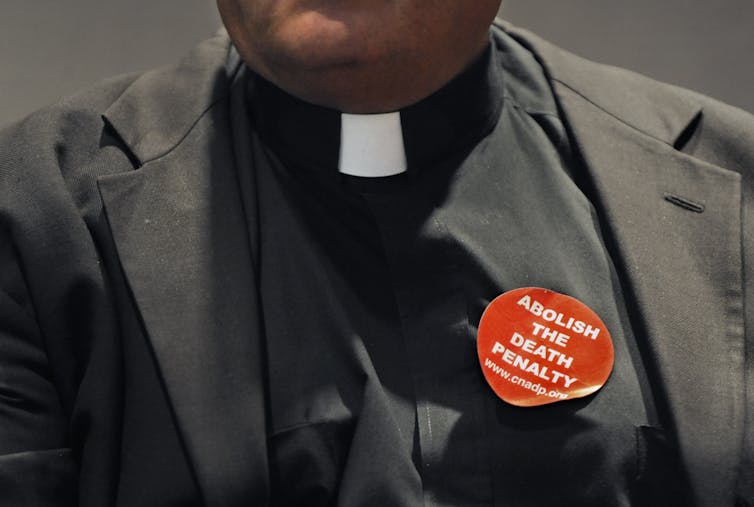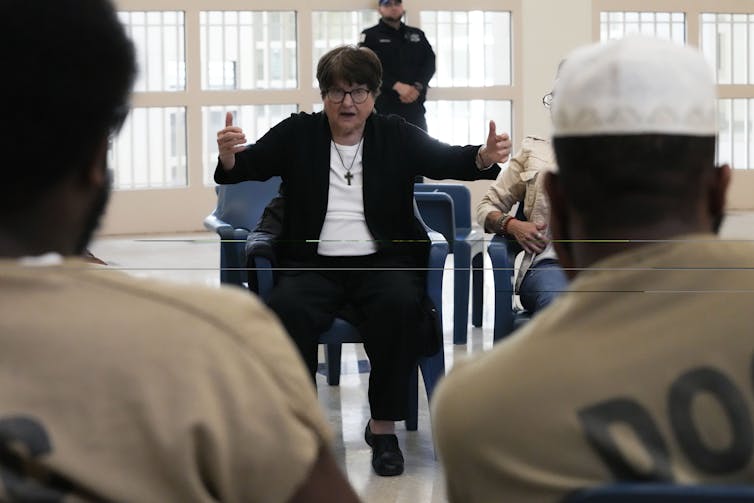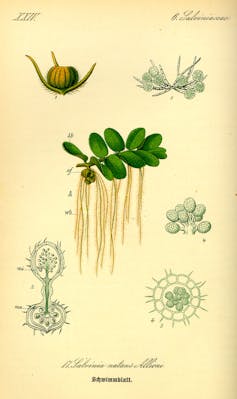Source: The Conversation – in French – By Yasmine SY, Ph.D candidate in Management Sciences – Academic Director, Groupe Supdeco Dakar
Longtemps reléguée à un savoir-faire domestique ou à un artisanat rural peu valorisé, la vannerie connaît aujourd’hui un regain d’intérêt en Afrique, à la croisée des enjeux culturels, économiques et environnementaux.
La vannerie est l’art de tresser des fibres végétales pour fabriquer des objets utilitaires ou décoratifs, comme des paniers, corbeilles, nattes, chapeaux, filets ou même des meubles.
Ce savoir-faire ancestral, transmis de génération en génération, est aujourd’hui réinterprété par une nouvelle génération d’entrepreneures africaines. À la tête d’initiatives audacieuses, elles repositionnent la vannerie non plus seulement comme pratique patrimoniale, mais comme levier d’innovation, de développement local et de rayonnement international.
Je suis chercheure en entrepreneuriat, spécialisée dans la transmission et la gouvernance des entreprises familiales en Afrique. J’observe que certains secteurs artisanaux comme la vannerie connaissent aujourd’hui des dynamiques de formalisation, d’innovation et d’essor économique portées en grande partie par des femmes entrepreneures.
Le cas d’Imadi, que nous avons étudié récemment, illustre de façon exemplaire la modernisation d’un secteur souvent perçu comme figé, à travers la réinvention des formes, des usages et des circuits de diffusion de la vannerie.
Imadi est une entreprise artisanale basée à Dakar. Elle valorise un savoir-faire traditionnel transmis de génération en génération. Elle produit des paniers tressés à la main, enrichis de finitions en cuir, aux designs modernisés tout en respectant les techniques ancestrales.
Mais jusqu’où ce modèle est-il réplicable ? Peut-il inspirer d’autres initiatives sur le continent? Quelles conditions doivent être réunies pour favoriser l’émergence d’un écosystème artisanal innovant?
Un secteur traditionnel en mutation
En Afrique de l’Ouest, plus particulièrement au Sénégal, l’artisanat demeure un secteur vital pour l’économie, à la fois comme réservoir d’emplois, vecteur d’identité culturelle et levier de résilience sociale. Au cœur de cet écosystème se trouve une activité méconnue mais fondamentale : la vannerie.
Selon les chiffres communiqués par le ministère sénégalais de l’Artisanat, le secteur représente entre 8 et 10 % du produit intérieur brut (PIB) national. Il mobilise environ un million d’artisans à travers 122 corps de métiers, dont plus de 70 % œuvrent dans l’économie informelle. Il s’agit d’un pan majeur de l’activité économique du pays : 98 % des unités économiques au Sénégal relèvent de l’artisanat, selon les données officielles du ministère délégué à l’Artisanat.
La participation des femmes est particulièrement significative dans les filières artisanales dites “traditionnelles”, notamment la vannerie, la poterie et la teinture. Une étude publiée en 2023 estime que les femmes représentent plus de 70 % des artisans dans le domaine de la vannerie. Elles sont souvent regroupées en coopératives ou Groupements d’intérêt économique (GIE) pour mutualiser leurs efforts de production et d’accès au marché.
Outre sa fonction économique, la vannerie joue un rôle socio-culturel essentiel. Pratiquée principalement dans les régions rurales et périurbaines (Kaolack, Thiès, Fatick, Saint-Louis), elle permet de préserver des savoir-faire ancestraux, tout en s’adaptant aux esthétiques contemporaines. Ces produits : paniers, corbeilles, tapis, couvercles, décorations murales, sont désormais exportés vers l’Europe et l’Amérique du Nord, notamment via des plateformes de commerce équitable ou de design éthique.
Ainsi, au fil des années, cette activité a évolué, devenant un secteur économique viable et en pleine expansion, soutenu par des femmes entrepreneures visionnaires.
Imadi est un exemple concret de cette transition. Fondée par une entrepreneure sénégalaise en 2017, Fatima Jobe, architecte de formation, l’entreprise produit des objets de vannerie à la fois décoratifs et utilitaires. En réinterprétant les formes traditionnelles avec une touche moderne, Imadi attire une clientèle internationale et locale de plus en plus soucieuse de la qualité et de l’origine des produits qu’elle consomme. Aujourd’hui, elle fait travailler plus d’une centaine de femmes dans une vingtaine de villages du Nord du Sénégal.
Les défis à relever
Toutefois, le secteur de la vannerie, bien qu’en pleine transformation, fait face à de nombreux défis. L’accès au financement reste une des principales difficultés. Les femmes entrepreneures dans l’artisanat sénégalais ont souvent du mal à obtenir des crédits bancaires, malgré le potentiel économique de leurs activités.
L’accès au financement constitue un obstacle majeur pour de nombreuses femmes entrepreneures au Sénégal. Bien qu’elles constituent un tiers des entrepreneurs, 87 % de femmes n’ont accès à aucun produit ou service financier.
De plus, la concurrence des produits importés bon marché menace la compétitivité des produits locaux. “Les produits importés, souvent à bas prix, créent une pression sur nos marges, mais nous ne sacrifierons pas la qualité et l’authenticité”, déclare Fatima Jobe, fondatrice d’Imadi.
Vers une transformation durable
Les initiatives de ce genre jouent un rôle clé dans la transformation de l’économie sénégalaise. En offrant des opportunités aux femmes, en particulier dans les zones rurales, elles participent activement à la création d’une économie plus inclusive. Sa fondatrice confie:
Je veux aider ces femmes, qui ont des talents incroyables, mais qui restent trop souvent en marge des circuits économiques, simplement faute de moyens de transport ou de visibilité.
Les femmes entrepreneures en Afrique, notamment dans des secteurs comme la vannerie, sont des moteurs de croissance dans les économies émergentes. Leur capacité à créer des emplois, à générer des revenus et à promouvoir des pratiques commerciales durables peut contribuer à réduire les inégalités et favoriser un développement économique plus équitable.
La clé de l’avenir du secteur réside dans l’intégration de nouvelles technologies et dans la capacité à s’adapter à un marché mondial en constante évolution.
De plus, l’Unesco estime que les industries culturelles et créatives, qui incluent l’artisanat, pourraient représenter jusqu’à 4 % du PIB africain d’ici 2030 et employer plus de 20 millions de personnes.
Un secteur en quête de consolidation
L’expérience d’Imadi illustre, parmi d’autres, les possibilités d’évolution d’un artisanat traditionnel porté majoritairement par des femmes. Sans être un modèle unique ou aisément reproductible, cette initiative montre qu’il est possible d’associer pratiques durables, ancrage local et ouverture aux marchés internationaux. Cette combinaison peut favoriser l’émergence de formes d’entrepreneuriat plus inclusives dans le secteur de la vannerie au Sénégal, voire en Afrique.
Pour que ce modèle se pérennise et se développe, il est impératif d’adresser les défis liés à l’accès au financement, à la formation technique et professionnelle et à la protection des produits locaux contre la concurrence déloyale.
En soutenant les femmes entrepreneures et en mettant en place des politiques publiques favorisant l’artisanat durable, le Sénégal pourrait renforcer sa position dans le secteur de la vannerie et dans d’autres secteurs artisanaux à forte valeur ajoutée.
Les femmes, au cœur de cette transformation, démontrent que l’artisanat ne se limite plus à un secteur traditionnel, mais qu’il peut être un véritable moteur de développement économique durable et inclusif pour l’avenir du Sénégal.
![]()
Yasmine SY does not work for, consult, own shares in or receive funding from any company or organisation that would benefit from this article, and has disclosed no relevant affiliations beyond their academic appointment.
– ref. La vannerie, un moyen d’inclusion financière au Sénégal : voici comment et pourquoi – https://theconversation.com/la-vannerie-un-moyen-dinclusion-financiere-au-senegal-voici-comment-et-pourquoi-252665






















